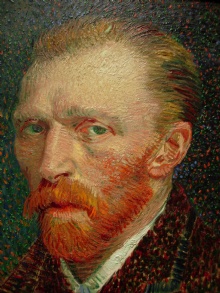"The best way to know God is to love many things"
About this Quote
To know God, Vincent Van Gogh suggests, one ought to immerse oneself in the act of loving many things. Loving, in this sense, goes beyond mere emotional attachment or fleeting fascination. It is a profound and active engagement with the world, a way of witnessing beauty, passion, and humanity in its countless forms. By loving widely, with open eyes and a generous spirit, one draws closer to a deeper understanding of divinity itself.
God, for Van Gogh, likely represents the transcendent mystery at the heart of existence: the source of creativity, kindness, and inspiration. To reach this presence is not accomplished solely through theological study or religious rituals; it requires the cultivation of a sensitive and appreciative heart. When someone loves many things, nature, art, people, simple objects, small gestures, they awaken to the interconnectedness and sacredness woven through all aspects of life.
Each act of love becomes a form of prayer, an affirmation that beauty and meaning reside everywhere, in both the grand and the commonplace. Consider how Van Gogh himself depicted starry skies, simple cottages, and sunflowers with fervor. He found in these subjects something worthy of adoration, something that spoke of the divine. By honoring even the seemingly insignificant, he demonstrated that God is not distant or unreachable, but found in everyday encounters if only one looks with love.
Moreover, loving many things yields empathy and compassion, qualities that flutter at the core of spiritual life. True knowledge of God cannot be hoarded for oneself alone; it unfolds as one turns attention outward and cares for others, for creatures, and for the marvels of the universe. The more connections one forges, the more one's understanding of God's vastness and generosity expands. In this way, the practice of loving leads to a knowledge that is felt, lived, and deeply personal, a revelation shaped by attention, gratitude, and, above all, love.
More details
About the Author

